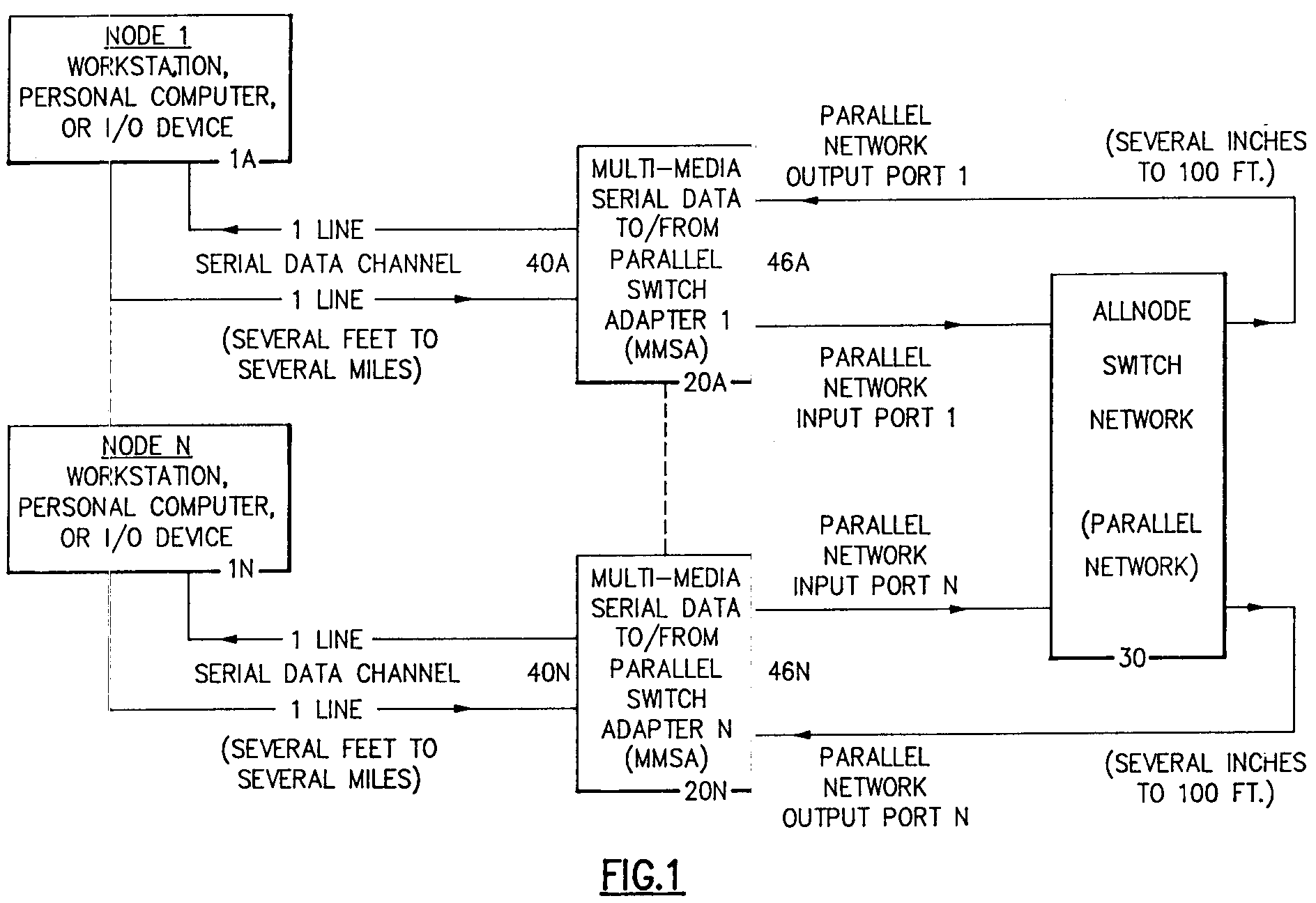(57) A generic network device includes a serial line switching apparatus for performing
either parallel or serial communications amongst multiple nodes over switching networks.
An aspect includes is the adaptation of standard and proprietary serial interfaces
using either optical or electrical transmission media to interface to the parallel
switch. The converted serial data is routed to the selected destination through the
parallel switch network, where it is received and converted back into a serial optical
or electrical interface/protocol. Thus, the combination of the switching adapter and
an ALLNODE parallel switching network make it feasible for serial message data to
be switched and routed to various destinations. A a parallel electrical switch can
efficiently handle either optical or electrical serial data and utilize information
via wireless gateways to provide the features required for parallel processing and
"farm" approaches, such as low latency, high bandwidth, scalability, fault tolerance,
and high reliability. In addition, further flexibility is provided which permits the
switching adapter to be personalized to support the any one of a number of standard
and proprietary serial protocols. A personalisation PROM specifies the particular
serial protocol that each individual adapter is to support. The parallel switching
network becomes a flexible media that interconnects and allows different serial protocols
to communicate with each other; i.e., any number of different serial protocols can
interface with the same parallel switch network. This allows every node of the parallel
system to send and receive messages using its own native protocol. However, a node
is not restricted to communicating only with others nodes using the same protocol,
but it can communicate with any of the other nodes regardless of the serial protocol
they use. The switch enables generic networks with heterogeneous and/or homologous
nodes as a computer system. It can replace LANs and WANs and provide high speed cluster
switching. Applications include parallel processing with existing computers, and features
of multiple processor computer system which transfer multi-media information from
one or many senders to one or many receivers, useful in teaching and many other applications.
The nodes of an asynchronous computer system are connected asynchronously in a non-blocking
by search manner with connections for set up at 2 cycles per cascaded node and message
transfer continues at maximum media transfer speed.
|

|
